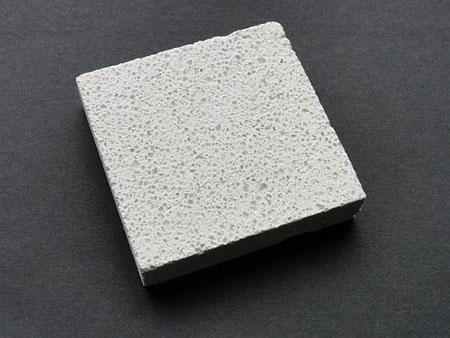| Nov 22, 2010 |
Aerogel-based plaster - a simple and effective way to insulate historical buildings
|
|
(Nanowerk News) Scientists at Empa, the Swiss Federal Laboratories for Materials Science and Technology, have developed a high performance plaster which boasts a thermal insulation value three-times better than convention plaster thanks to so-called aerogels. The new material offers an elegant method of renovating historic buildings to save energy without altering their appearances.
|
|
Those undertaking the renovation of historical buildings are frequently faced with the challenge of how to improve the thermal insulation levels of old structures effectively yet elegantly. To date there has been no method available which offers a technically satisfactory solution to this problem without noticeably changing the appearance of the historic building. Now, however, researchers from Empa's Building Technologies Laboratory, working in cooperation with a leading manufacturer of building materials, have developed an aerogel-based high performance insulating plaster which will undergo field trials next year and is expected to be commercially available by 2013. Thanks to its mineral basis, the new plaster is both optically and in application very similar to the original historical building materials, and this makes it ideal for use on old buildings – on internal as well as external surfaces.
|
 |
| The new insulating plaster is simple sprayed onto walls. The photograph shows a block of the material.
|
|
The «secret» behind the novel insulating plaster is a so-called aerogel. This substance possesses nanometer-sized pores and consists of 90 to 98 per cent air. These minute pores make aerogels an excellent material for use in the new insulating plaster, lending it a thermal conductivity value of less than 30 mW/mK which is some two to three times better than that of conventional plaster.
|
|
A further advantage of the new plaster is its property of being simultaneously water repellent and permeable to water vapor. The new product is significantly more breathable than conventional plasters, and yet its surface does not become wet. Co-developer Thomas Stahl explains. "The porous structure of the aerogel makes the plaster permeable to water molecules, but for macroscopic water droplets the nano-pores are much to fine."
|
|
The first buildings will be plastered with the new high performance material on a trial basis beginning in mid-2012. The additional cost of this innovative new plaster compared to conventional materials is expected to be between CHF 50 and 100 per square meter, depending on how thickly it is applied.
|

